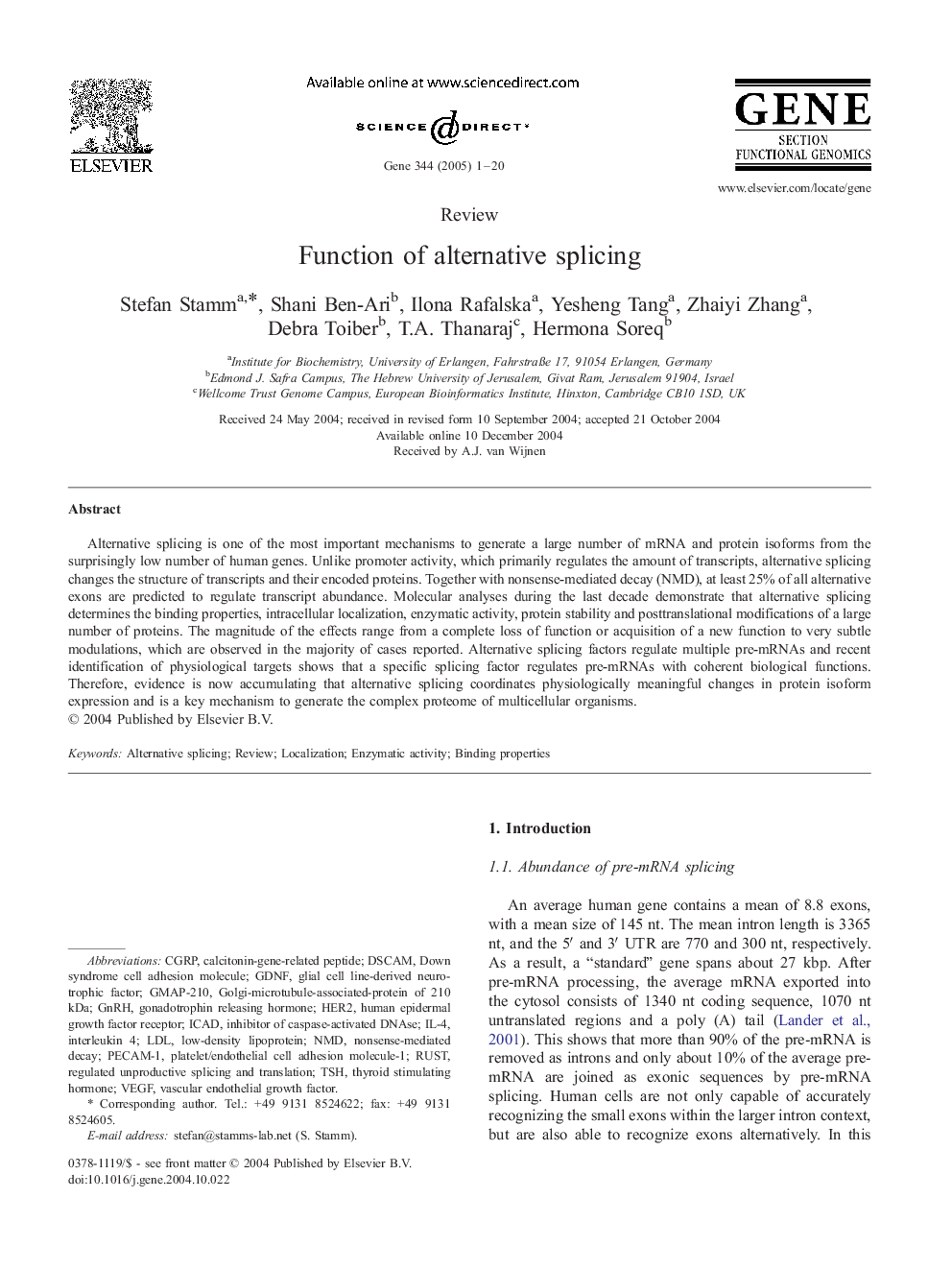| Article ID | Journal | Published Year | Pages | File Type |
|---|---|---|---|---|
| 9127337 | Gene | 2005 | 20 Pages |
Abstract
Alternative splicing is one of the most important mechanisms to generate a large number of mRNA and protein isoforms from the surprisingly low number of human genes. Unlike promoter activity, which primarily regulates the amount of transcripts, alternative splicing changes the structure of transcripts and their encoded proteins. Together with nonsense-mediated decay (NMD), at least 25% of all alternative exons are predicted to regulate transcript abundance. Molecular analyses during the last decade demonstrate that alternative splicing determines the binding properties, intracellular localization, enzymatic activity, protein stability and posttranslational modifications of a large number of proteins. The magnitude of the effects range from a complete loss of function or acquisition of a new function to very subtle modulations, which are observed in the majority of cases reported. Alternative splicing factors regulate multiple pre-mRNAs and recent identification of physiological targets shows that a specific splicing factor regulates pre-mRNAs with coherent biological functions. Therefore, evidence is now accumulating that alternative splicing coordinates physiologically meaningful changes in protein isoform expression and is a key mechanism to generate the complex proteome of multicellular organisms.
Keywords
HER2ICADDSCAMNMDGDNFCGRPPECAM-1TSHIL-4GnRHinhibitor of caspase-activated DNaseInterleukin 4LocalizationAlternative splicingBinding propertiesRustVascular endothelial growth factorVascular Endothelial Growth Factor (VEGF)Glial cell line-derived neurotrophic factorNonsense-mediated decayEnzymatic activityLow-density lipoproteinLDLReviewDown syndrome cell adhesion moleculegonadotrophin releasing hormonethyroid stimulating hormonecalcitonin-gene-related peptidehuman epidermal growth factor receptor
Related Topics
Life Sciences
Biochemistry, Genetics and Molecular Biology
Genetics
Authors
Stefan Stamm, Shani Ben-Ari, Ilona Rafalska, Yesheng Tang, Zhaiyi Zhang, Debra Toiber, T.A. Thanaraj, Hermona Soreq,
